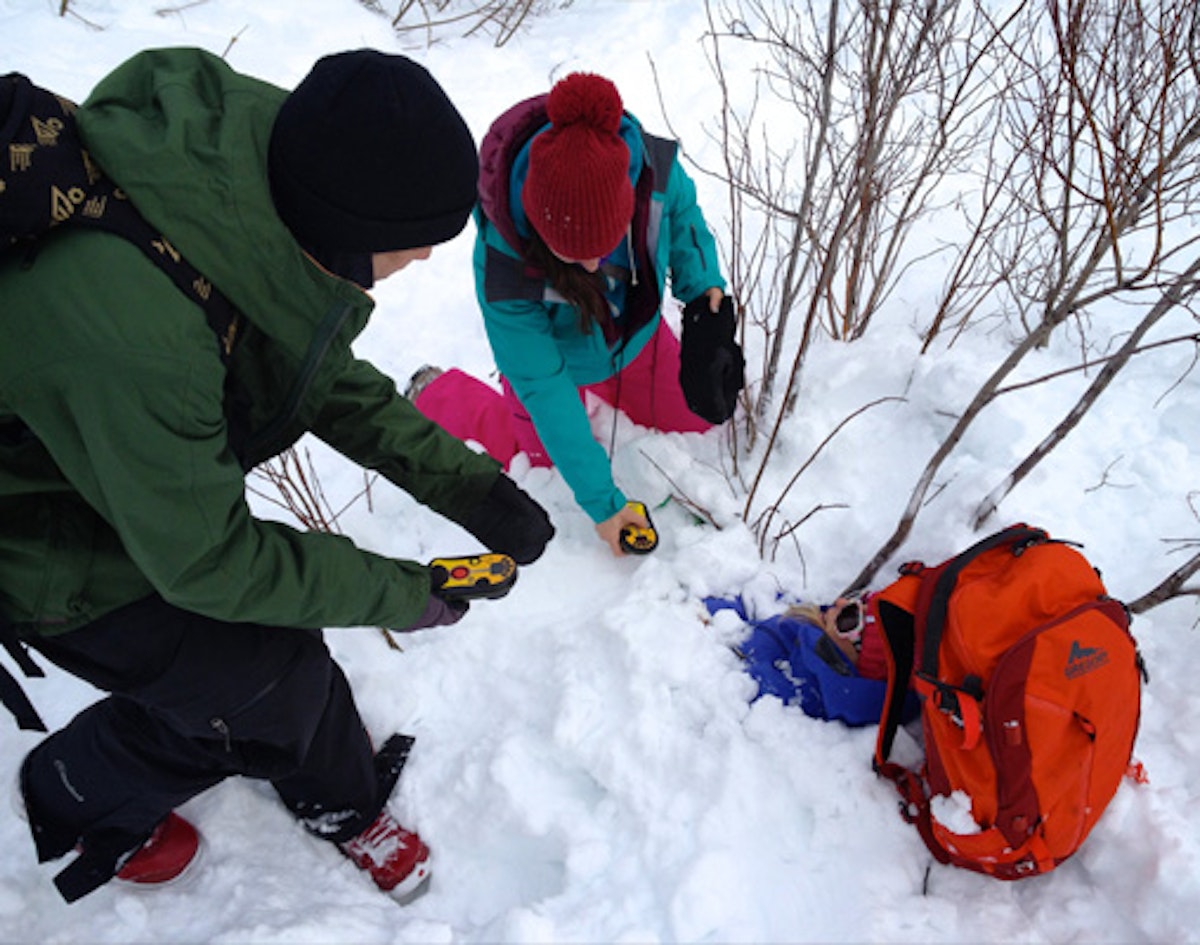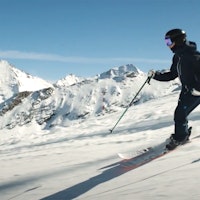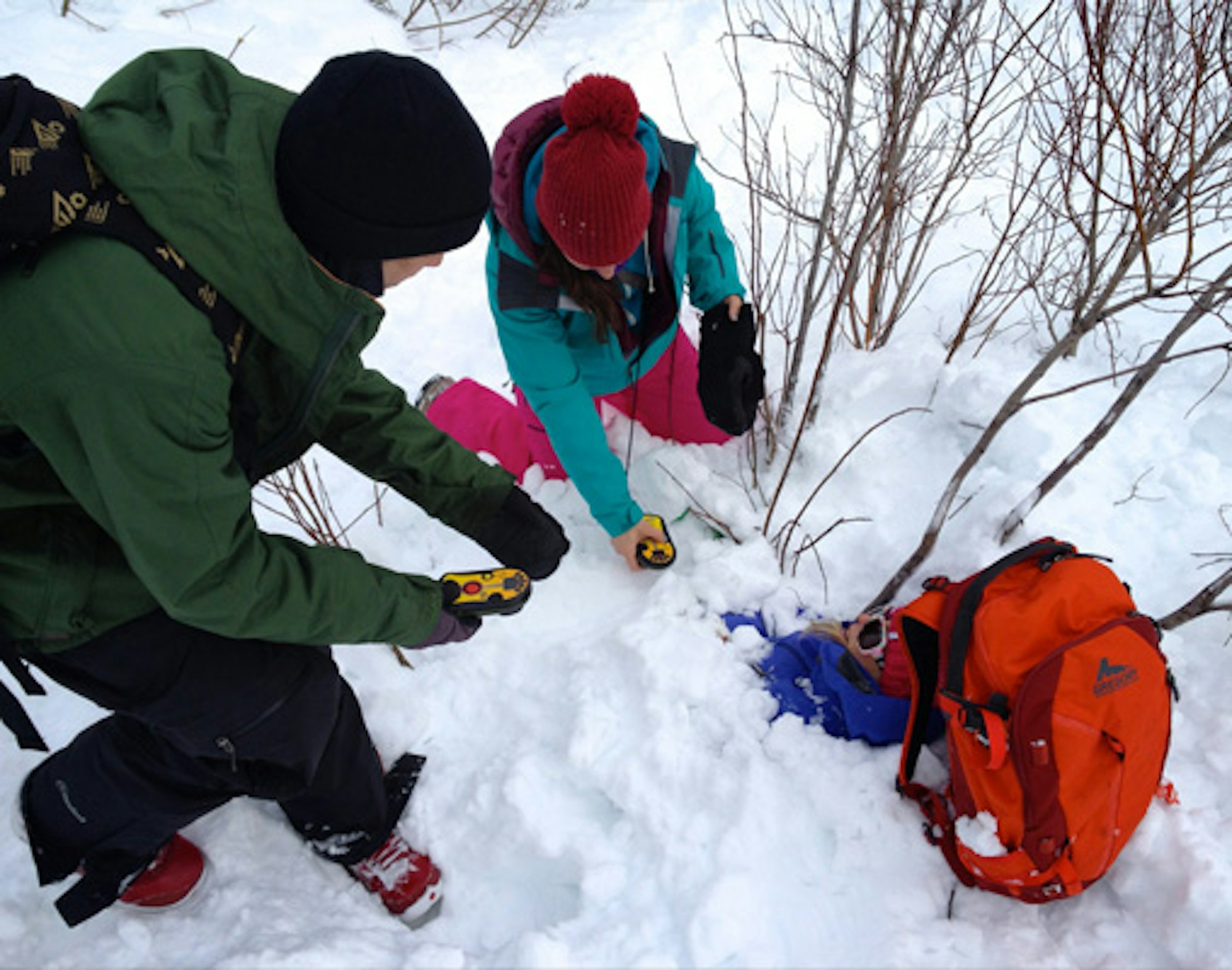Not every backcountry user enjoys wiggle-turning down powder meadows, hop-turning in 30-degree glades, or sideslipping to avoid the mandatory five-footer. So, when professional athletes and experienced avalanche forecasters come together to present an avalanche workshop designed for advanced riders, the teachings are practical and applicable to freeride issues: Complicated scenarios in steep terrain, effective partner rescue, and balancing the desire to ski dramatic lines with the need to survive. On January 6-8, the Utah Avalanche Center hosted its fourth annual Snowbird Freeride Avalanche Summit, presented by Black Diamond.
Here are ten takeaways, straight from workshop participants:
1. Search avalanche debris for gear, which act as clues. If you see a glove, pick it up—a hand might be attached. After you check the gear, put it back where you found it. Clues are often left in a straight line, creating a path to the victim.
2. Compass aspect should play heavily into your line choice. Two adjacent slopes, though connected, can have drastically different avalanche dangers.
3. Ongoing education is essential, regardless of your personal experiences. The longer you’re in this, the more theories and practices change and develop.
4. It is vital to communicate a plan with everyone in your backcountry party. Never assume anything and never become complacent to decisions being made.
5. Snow isn’t static, but very dynamic. Because it is constantly changing, situational awareness is key. Become familiar with the snow, your run, your partners, and yourself.
6. Be honest about your knowledge and abilities with your partners and yourself. Understand how this skillset plays into your day’s decisions.
7. Make your practice scenarios as realistic as possible. Include chaos, panic, and good acting skills. Instead of burying a backpack to practice probing technique, dig a hole in the side of a slope, put a friend in it, and probe her. Practice the right way: with two hands, in a spiral, 25cm apart, perpendicular to the slope.
8. Detach your avalanche skills from your ski skills. A line that you can physically ski is not necessarily safe to ski. If the snowpack isn’t right, or you don’t have enough education to know whether a run is safe or not, don’t ski it. The mountain doesn’t care how well you ski.
9. The majority of avalanches happen in the “red-light” zone, 34 to 45 degrees in pitch. While this is the most frequent (and fun) pitch to ski, it is also the most deadly.
10. When using a tree as an island of safety, it should be at least 14” in diameter and you should stop uphill of it. You are not strong enough to stand downhill of a tree and bearhug it with an avalanche pulling you down.
The 4:1 student-instructor ratio allowed participants to pick the brains of top athletes and avalanche experts focusing on decision-making, assessing snow stability, active terrain and situational management, and the use of available resources. If managed properly, it isn’t careless to use backcountry terrain aggressively. Avalanche workshops such as the Utah Avalanche Center’s Freeride Avalanche Summit can aid in your ability to safely ski the lines you desire.


![[GIVEAWAY] Win a Head-to-Toe Ski Setup from IFSA](https://www.datocms-assets.com/163516/1765920344-ifsa.jpg?w=200&h=200&fit=crop)
![[GIVEAWAY] Win a Legendary Ski Trip with Icelantic's Road to the Rocks](https://www.datocms-assets.com/163516/1765233064-r2r26_freeskier_leaderboard1.jpg?w=200&h=200&fit=crop)


![[GIVEAWAY] Win a Legendary Ski Trip with Icelantic's Road to the Rocks](https://www.datocms-assets.com/163516/1765233064-r2r26_freeskier_leaderboard1.jpg?auto=format&w=400&h=300&fit=crop&crop=faces,entropy)




![[GIVEAWAY] Win a Head-to-Toe Ski Setup from IFSA](https://www.datocms-assets.com/163516/1765920344-ifsa.jpg?auto=format&w=400&h=300&fit=crop&crop=faces,entropy)


